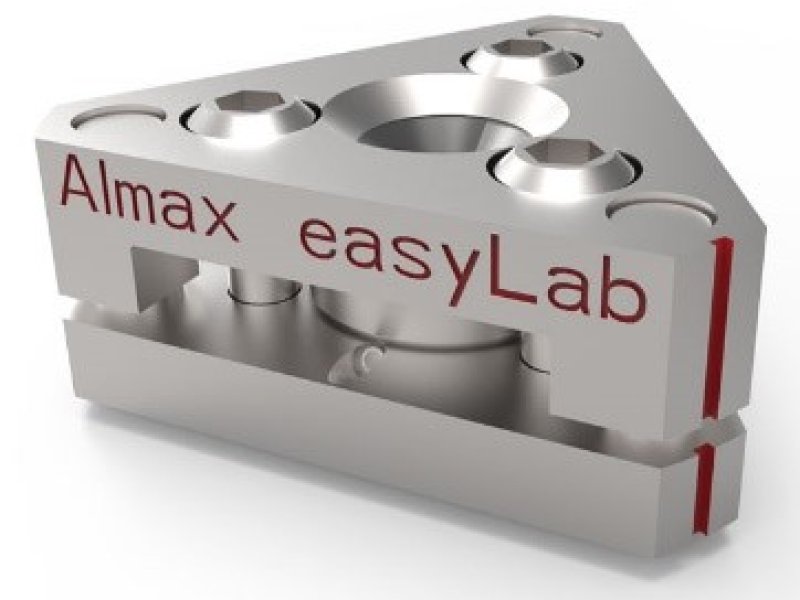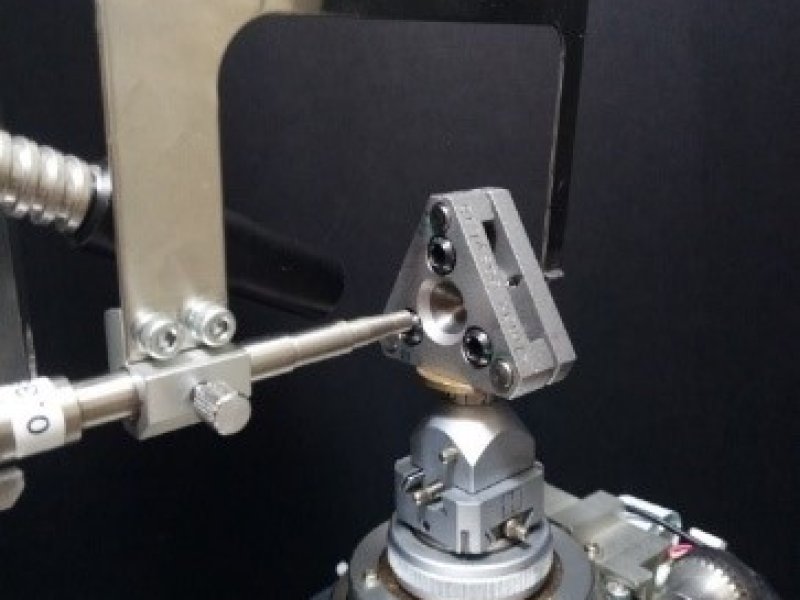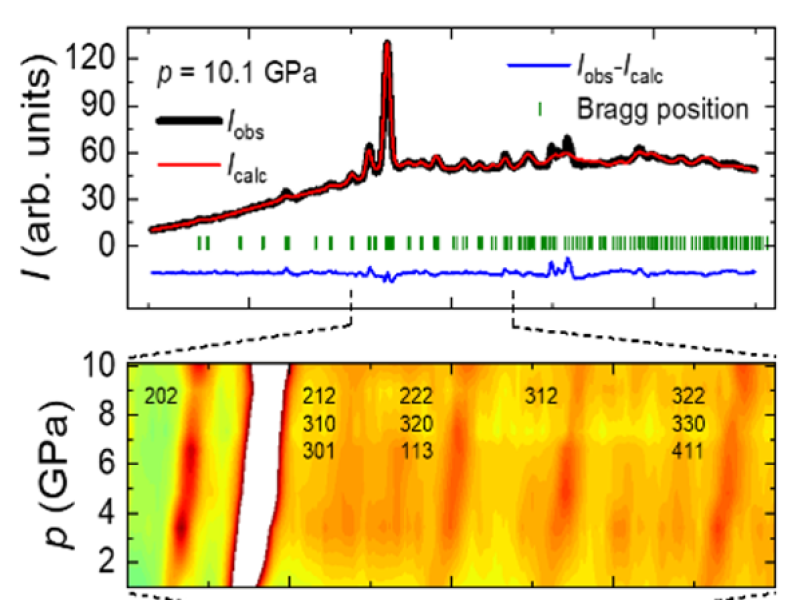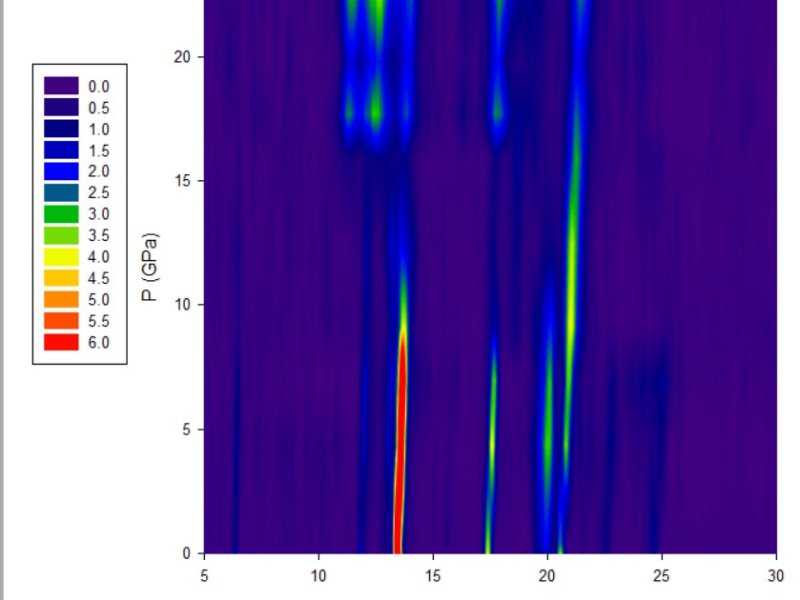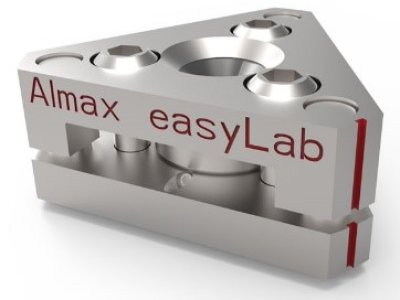
In last months we have succeeded in implementation of a new experimental method of measurement of structural parameters upon application of high pressure (at room temperature). This method uses the commercially bought diamond anvil pressure cell (DAC) from Almax easyLab bv company in combination with the Rigaku Rapid II diffractometer in our X-ray laboratory.
Initial set-up procedures were followed by first test loadings of the cell. These tests resulted in shifting the high presure limit by each loading, continuously raising highest pressure reached in the frame of gradual ageing of the cell. Simultaneously during this process, first X-ray diffraction patterns were collected and consequently positioned within the X-ray beam and improved with respect to several parameters, in many cases acting against each other – sample space diameter (vs. highest pressure and amount of the loaded sample), beam size (vs. sufficient data statistics and unwanted signal from the gasket) etc.
The nominal pressure of the cell is 20 GPa. Nevertheless, the highest pressure reached so far with real sample and measured XRD pattern was 23 GPa (UCu2P2 – see the picture, publication on process) and very recently even more – 30 GPa (EuRu2P2), having a potential for further raising of this limit within the continuous optimization of the conditions and ageing of the pressure cell.
The procedure of optimization of the mentioned parameters necessary within the start-up of each experiment was settled and used finally in measurements by students in their works, including PhD thesis (P. Král, Prague 2024), Bc thesis (M. Jesenič, Prague 2024) and student faculty grant (M. Bystrický). The data obtained during the first experiments are subject of a scientific papers, one already published and one in publication process.
The data naturally do not have same quality as the data obtained from experiment on synchrotron. Nevertheless, we can already state that by using this cell we are able to obtain pressure dependence of the lattice constants and distinguish a pressure-induced structural transition or sign of the pressure-induced valence transition. The last mentioned was the case of EuRu2Ge2 when our data were used to support the beamtime proposal to ESRF. The proposal (XAS under pressure) was successfull and the requested beamtime was granted.




